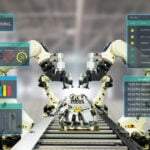
Over the past few weeks, I have had to make significant edits to my second book, “The Next Wave of Technologies.” In doing so, I have been keeping in mind Melvin Kranzberg’s six laws of technology. I figured that it was time for me to take a step back and reflect.
So, here are Mr. Kransberg’s laws in the context of my forthcoming book…
Technology is neither good nor bad; nor is it neutral.
To be sure, technology can be used it both positive and negative ways. Take social networking, the subject of one of the book’s chapters. My friend, prolific author Jason Miletsky, is contributing this chapter. He’d be the first to tell you that social networking can unearth tremendous opportunities for businesses, individuals, and other institutions. Those same opportunities also pose enormous privacy and security risks.
Or consider mobile technologies, the subject of a chapter by Bhuvan Unhelkar. Being able to access key organizational information away from a desktop or laptop is enormously valuable. But what if you lose your iPhone or BlackBerry? What if someone hacks into an unprotected device?
The bottom line is that you can find both good and bad reasons to adopt or not adopt any .. …

Over the past few weeks, I have had to make significant edits to my second book, “The Next Wave of Technologies.” In doing so, I have been keeping in mind Melvin Kranzberg’s six laws of technology. I figured that it was time for me to take a step back and reflect.
So, here are Mr. Kransberg’s laws in the context of my forthcoming book…
Technology is neither good nor bad; nor is it neutral.
To be sure, technology can be used it both positive and negative ways. Take social networking, the subject of one of the book’s chapters. My friend, prolific author Jason Miletsky, is contributing this chapter. He’d be the first to tell you that social networking can unearth tremendous opportunities for businesses, individuals, and other institutions. Those same opportunities also pose enormous privacy and security risks.
Or consider mobile technologies, the subject of a chapter by Bhuvan Unhelkar. Being able to access key organizational information away from a desktop or laptop is enormously valuable. But what if you lose your iPhone or BlackBerry? What if someone hacks into an unprotected device?
The bottom line is that you can find both good and bad reasons to adopt or not adopt any technology. I find it hard to be neutral on any of them.
Invention is the mother of necessity.
Working with Amy Wohl has been an amazing experience. She’s contributing chapters about SaaS and cloud computing. We’ve discussed how clouds have become essential because people no longer only access information at their desks via big gray boxes. Things like mobile devices and laptops have in fact made clouds more than just convenient; in many areas, they have become essential.
In other words, even if clouds were possible fifteen years ago (and they may well have been), the timing wasn’t right. It is now. That’s why you’re hearing so much about clouds these days.
Technology comes in packages, big and small.
It’s funny. Some of the technologies discussed in the book are more evolutionary than revolutionary. I think often of Damien Santer’s chapter on enterprise search and retrieval (ESR). We can Google 8 quadrillion web pages in 0.4 seconds but many of us can’t find key documents at work. Where is that damned spreadsheet? Explain that to me?
I’d argue two things here. First, ESR—and other technologies—qualify as evolutionary, not revolutionary. Second, that distinction does not matter. Whether a technology is truly game-changing (vs. just useful) is not as important as its utility and practicality. The latter are paramount to any arbitrary label.
Although technology might be a prime element in many public issues, nontechnical factors take precedence in technology-policy decisions.
Spot on, as my English friends tell me. Bob Charette is contributing a chapter on enterprise risk management (ERM). Bob writes extensively about how organizations are responding to contemporary legislation such as Sarbanes-Oxley. Make no mistake: SOX and other regulations absolutely impact organizational decisions vis-à-vis technology. However, the very decision to pass SOX was not driven by technology; it was based on fairness, financial transparency, and other non-technological reasons. I would imagine that the same will hold true regarding potential reforms of the financial system in the wake of the financial meltdown.
All history is relevant, but the history of technology is the most relevant.
Think about what electricity, the Internet, and the printing press have done. Without fear of exaggeration they have each changed the world. Technology is huge. It’s just that simple.
Technology is a very human activity—and so is the history of technology.
This might sum up the entire book in one sentence. Enterprise 2.0 is all about people. So was Enterprise 1.0. Perhaps Enterprise 3.0 technologies will implement themselves. Until that point, however, people will ultimately cause these technologies to succeed or fail.





